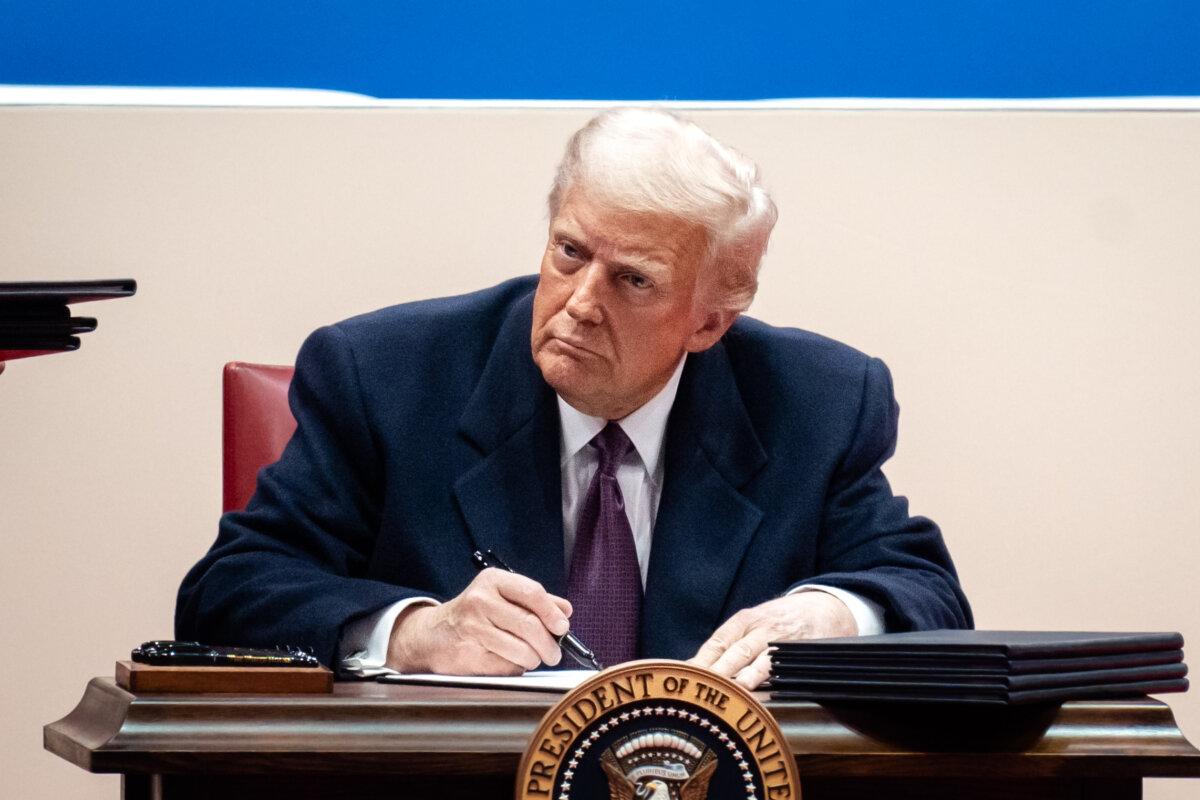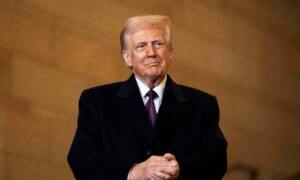With the power of a U.S. market that will lead the world’s economic growth, Trump uses tariffs as a bigger tool this time around, experts say.
News Analysis
With President Donald Trump’s return to the White House, tariffs have become a negotiation tool again, especially with China.
So far, instead of primarily using tariffs to address trade imbalances, as he did in his first term, Trump is applying the tool more broadly and more measuredly.
On his first day in office on Jan. 20, Trump signed a memo ordering federal agencies to investigate unfair trade practices by foreign countries and recommend associated trade policies.
Trump also directed an assessment of the impact of China’s forced technology transfer on U.S. industrial supply chains and a reevaluation of China’s preferred trade status with the United States, also known as Permanent Normal Trade Relations.
The following day, the president threatened to impose a 10 percent universal tariff on Chinese goods as soon as Feb. 1. Since taking office, Trump has not mentioned the 60 percent rate he proposed on the campaign trail.
William Lee, chief economist at the Milken Institute, a California-based economic think tank, said Trump is using tariffs differently in his second term as “a policy tool for not just economic policy, but also for foreign policy and national security.”
Tariffs are now “a bigger instrument with a bigger set of targets,” Lee told The Epoch Times.
Trump also separately floated a 25 percent tariff on imports from Mexico and Canada. Lee said this would close the backdoor to Chinese goods flooding the United States through these two countries.
When Trump left office, China had benefited from decades of uninterrupted economic growth. It promoted its draconian lockdown during the COVID-19 pandemic as evidence of an authoritarian system and showcased its strength in the global supply chain, from masks to chips.
But now, the Chinese economy is ailing and increasingly dependent on exports. China is more vulnerable to tariffs, and Trump knows it.
“We have one very big power over China, and that’s tariffs, and they don’t want them, and I’d rather not have to use it, but it’s a tremendous power over China,” the president said in an interview on Fox News on Jan. 23.
Lee said Trump is making these remarks to urge other countries to come forth with concessions. “Trump has combined economic policy as an incentive for diplomatic moves,” he said.
Trump’s new team is also much more favorable to tariffs than his first Trump administration. His newly confirmed Treasury secretary, Scott Bessent, and his Commerce secretary nominee, Howard Lutnick, have publicly endorsed tariffs.

President Donald Trump signs executive orders at the Capital One Arena in Washington on Jan. 20, 2025. Madalina Vasiliu/The Epoch Times
The Power of Tariffs
Tariff revenue has been insignificant. It made up less than 2 percent of the total U.S. government revenue last fiscal year ending September.
However, experts say the power of tariffs doesn’t lie in revenue generation. Instead, they’re useful because they affect foreign businesses’ access to the U.S. market.
The United States remains one of the most lucrative markets globally and will lead the growth in a slowing world economy marred by inflation and geopolitical conflicts.
Tariffs could further propel global supply chains to move away from China and reduce Beijing’s influence, according to Yeh Yao-Yuan, professor of international studies at the University of St. Thomas in Houston.
The firm also forecasted a 3 to 4.5 percent growth rate for China this year “if it stimulates domestic demand with some urgency and ramps up debt,” which is a daunting task for the country’s traditional supply-driven growth model.
Trump firmly believes in the power of tariffs as a tool to fulfill the “Make America Great Again” agenda.
“If you don’t make your product in America, you will have to pay a tariff,” the president told political and business leaders at the Davos summit on Jan. 23.
Milken Institute’s Lee said Trump “recognizes that, as a businessman, the U.S. market is very valuable.”
Lee believes that Trump’s numerous remarks about tariffs create a pressing need for trade partners, particularly China, to offer a deal.
Pressure on China
The design of China’s economic model determines its significant dependence on exports and vulnerability to tariffs, according to Li Shaomin, a professor of international business at Old Dominion University in Virginia.
China operates like a massive company, directing resources toward key industries and dominating the supply chain, said the author of “The Rise of China, Inc.: How the Chinese Communist Party Transformed China into a Giant Corporation.”
Li noted that this approach naturally resulted in overcapacity, making China reliant on global trade. Hence, China’s economic model wouldn’t work if the United States and other Western democracies started delinking from it.
In his view, the top priority of the Chinese Communist Party (CCP) and its leader Xi Jinping is to keep the Party’s “permanent and absolute rule.” Thus, Xi sees a strong, independent business class and individuals such as Jack Ma as a threat because of their eventual demand for freedom.
Li was once a soldier during the Cultural Revolution in China, tasked with painting portraits of former CCP leader Mao Zedong. Li’s father served as a senior propaganda official when the Party was led by Hu Yaobang, who was forced to resign in 1987 for being too open to Western-style reforms.
If the West were to delink from China, Li said, then the ordinary Chinese would ultimately suffer.
During difficult times, the CCP will play a “zero-sum game” and accumulate wealth and power at the expense of the Chinese people, he told The Epoch Times.
Any conflict that arises between the Party and the Chinese populace would place immense pressure on Xi, Li said, noting that the CCP leader lacks the flexibility to take any action that could undermine the Party’s rule.

The Washington Monument on the National Mall in Washington on Jan. 20, 2025. John Fredricks/The Epoch Times
‘No Solution’
Trump wants supply chain independence by importing less essential goods from China. He also wants China to fulfill its commitments under the “phase one” trade deal and curb its flow of fentanyl precursors into the United States via Mexico and Canada. Meanwhile, China wants access to American high-tech.
The experts agree that Washington and Beijing are unwilling to concede to each other’s demands, given China’s record of limited cooperation in buying American products and curbing fentanyl flows and the United States’ consistent escalation on technology-related export controls.
Therefore, they think a trade deal is unlikely because neither party will provide meaningful concessions. Thus, Trump will probably impose the 10 percent universal tariffs on Chinese imports to show credible threats.
Capital Economics, a London-based consultancy firm, informs its clients that it still anticipates 10 percent of tariffs to take effect in the second quarter despite Trump not ordering any on his first day in office.
Based on the actual impact of tariffs during Trump’s first term, a 10 percent universal tariff on China is unlikely to cause significant hardship for Americans.
A 2023 study by the U.S. International Trade Commission reviewed the impact of Section 301 tariffs from 2018 to 2021, ranging from 10 to 25 percent. Trump levied duties on Chinese goods over Beijing’s intellectual property theft by invoking Section 301 of the Trade Act of 1974.
Yeh pointed out that Xi has stirred up so much nationalism and anti-American sentiment in China’s education system and propaganda, making it nearly impossible for him to give in to Trump.
“I don’t see a solution for Trump unless Beijing concedes,“ Yeh said. ”However, yielding to Washington also offers no solution for Xi Jinping.”
Original News Source Link – Epoch Times
Running For Office? Conservative Campaign Consulting – Election Day Strategies!


